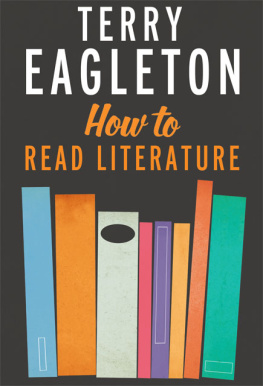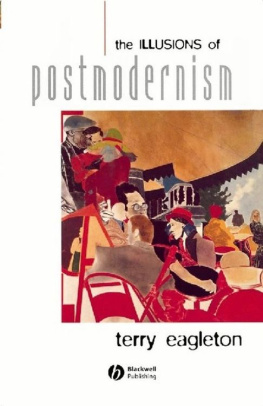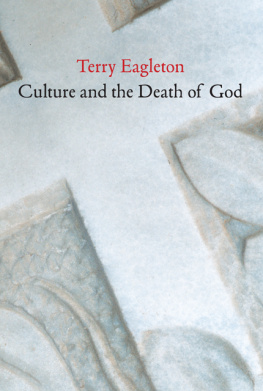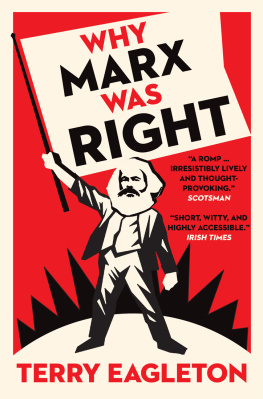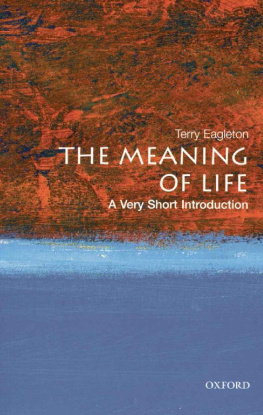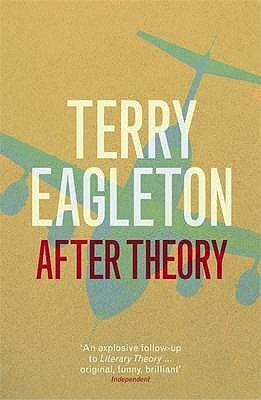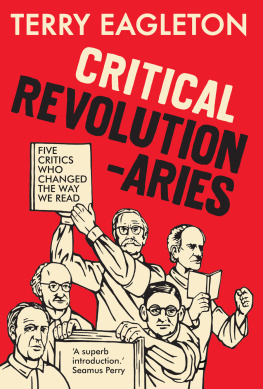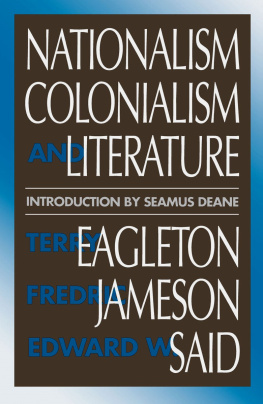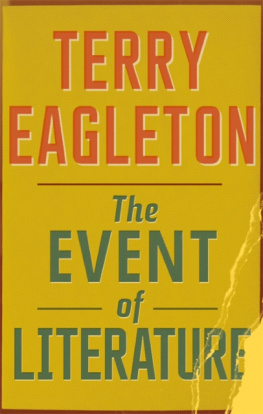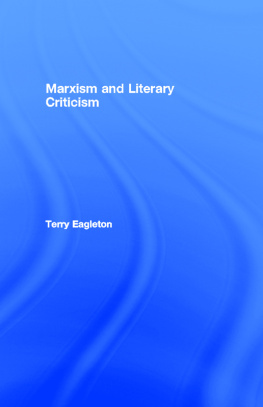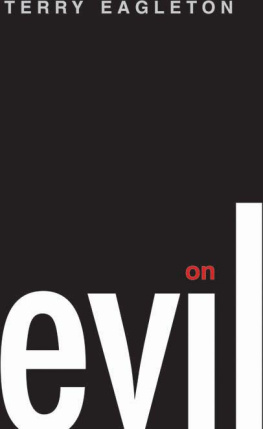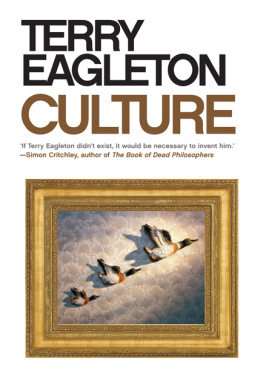

Copyright 2013 Yale University
All rights reserved. This book may not be reproduced in whole or in part, in any form (beyond that copying permitted by Sections 107 and 108 of the U.S. Copyright Law and except by reviewers for the public press) without written permission from the publishers.
For information about this and other Yale University Press publications, please contact:
U.S. Office:
Europe Office:
Set in Arno Pro by IDSUK (DataConnection) Ltd
Printed in Great Britain by TJ International Ltd, Padstow Cornwall
Library of Congress Cataloging-in-Publication Data
Eagleton, Terry, 1943
How to read literature / Terry Eagleton.
pages cm
ISBN 978-0-300-19096-0 (cl : alk. paper)
1. LiteraturePhilosophy. 2. Authors and readers. 3. Reader-response criticism. 4. LiteratureExplication. I. Title.
PN49.E25 2013
801dc23
2013001802
A catalogue record for this book is available from the British Library.
10 9 8 7 6 5 4 3 2 1
For permission to reprint poetry extracts from copyright material the publishers gratefully acknowledge Farrar, Straus and Giroux for lines from Robert Lowell's The Quaker Graveyard in Nantucket; and Faber and Faber Ltd, and Farrar, Straus and Giroux for lines from Philip Larkin's The Trees and Whitsun Weddings.
In memory of
Adrian and Angela Cunningham
Contents
Preface
Like clog dancing, the art of analysing works of literature is almost dead on its feet. A whole tradition of what Nietzsche called slow reading is in danger of sinking without trace. By paying close attention to literary form and technique, this book tries to play a modest part in riding to its rescue. It is mainly intended as a guide for beginners, but I hope it will also prove useful to those already engaged in literary studies, or those who simply enjoy reading poems, plays and novels in their spare time. I try to shed some light on such questions as narrative, plot, character, literary language, the nature of fiction, problems of critical interpretation, the role of the reader and the question of value judgements. The book also puts forward some ideas about individual authors, as well as about such literary currents as classicism, romanticism, modernism and realism, for those who might feel in need of them.
I am, I suppose, best known as a literary theorist and political critic, and some readers might wonder what has become of these interests in this book. The answer is that one cannot raise political or theoretical questions about literary texts without a degree of sensitivity to their language. My concern here is to provide readers and students with some of the basic tools of the critical trade, without which they are unlikely to be able to move on to other matters. I hope to show in the process that critical analysis can be fun, and in doing so help to demolish the myth that analysis is the enemy of enjoyment.
TE
CHAPTER 1
Openings
Imagine that you are listening to a group of students around a seminar table discussing Emily Bront's novel Wuthering Heights. The conversation might go something like this:
Student A: I can't see what's so great about Catherine's relationship with Heathcliff. They're just a couple of squabbling brats.
Student B: Well, it's not really a relationship at all, is it? It's more like a mystical unity of selves. You can't talk about it in everyday language.
Student C: Why not? Heathcliff's not a mystic, he's a brute. The guy's not some kind of Byronic hero; he's vicious.
Student B: OK, so who made him like that? The people at the Heights, of course. He was fine when he was a child. They think he's not good enough to marry Catherine so he turns into a monster. At least he's not a wimp like Edgar Linton.
Student A: Sure, Linton's a bit spineless, but he treats Catherine a lot better than Heathcliff does.
What is wrong with this discussion? Some of the points made are fairly perceptive. Everybody seems to have read their way beyond page 5. Nobody seems to think that Heathcliff is a small town in Kansas. The problem is that if someone who had never heard of Wuthering Heights were to listen in on this discussion, they would find nothing to suggest that it was about a novel. Perhaps a listener might assume that the students were gossiping about some rather peculiar friends of theirs. Maybe Catherine is a student in the School of Business Studies, Edgar Linton is Dean of Arts and Heathcliff is a psychopathic janitor. Nothing is said about the techniques by which the novel builds up its characters. Nobody raises the question of what attitudes the book itself takes up towards these figures. Are its judgements always consistent, or might they be ambiguous? What about the novel's imagery, symbolism and narrative structure? Do they reinforce what we feel about its characters, or do they undercut it?
Of course, as the debate continued, it might become clearer that the students were arguing about a novel. Some of the time, it is hard to distinguish what literary critics say about poems and novels from talk about real life. There is no great crime in that. These days, however, this can be true for rather too much of the time. The most common mistake students of literature make is to go straight for what the poem or novel says, setting aside the way that it says it. To read like this is to set aside the literariness of the work the fact that it is a poem or play or novel, rather than an account of the incidence of soil erosion in Nebraska. Literary works are pieces of rhetoric as well as reports. They demand a peculiarly vigilant kind of reading, one which is alert to tone, mood, pace, genre, syntax, grammar, texture, rhythm, narrative structure, punctuation, ambiguity in fact to everything that comes under the heading of form. It is true that one could always read a report on soil erosion in Nebraska in this literary way. It would simply mean paying close attention to the workings of its language. For some literary theorists, this would be enough to turn it into a work of literature, though probably not one to rival King Lear.
Part of what we mean by a literary work is one in which what is said is to be taken in terms of how it is said. It is the kind of writing in which the content is inseparable from the language in which it is presented. Language is constitutive of the reality or experience, rather than simply a vehicle for it. Take a road sign reading Roadworks: Expect Long Delays on the Ramsbottom Bypass for the Next Twenty-Three Years. Here, the language is simply a vehicle for a thought that could be expressed in a whole variety of ways. An enterprising local authority might even put it in verse. If they were unsure of how long the bypass would be out of action, they might always rhyme Close with God knows. Lillies that fester smell far worse than weeds, by contrast, is a lot harder to paraphrase, at least without ruining the line altogether. And this is one of several things we mean by calling it poetry.
To say that we should look at what is done in a literary work in terms of how it is done is not to claim that the two always slot neatly together. You could, for example, recount the life-history of a field mouse in Miltonic blank verse. Or you could write about your yearning to be free in a strict, straitjacketing kind of metre. In cases like this, the form would be interestingly at odds with the content. In his novel
Next page
